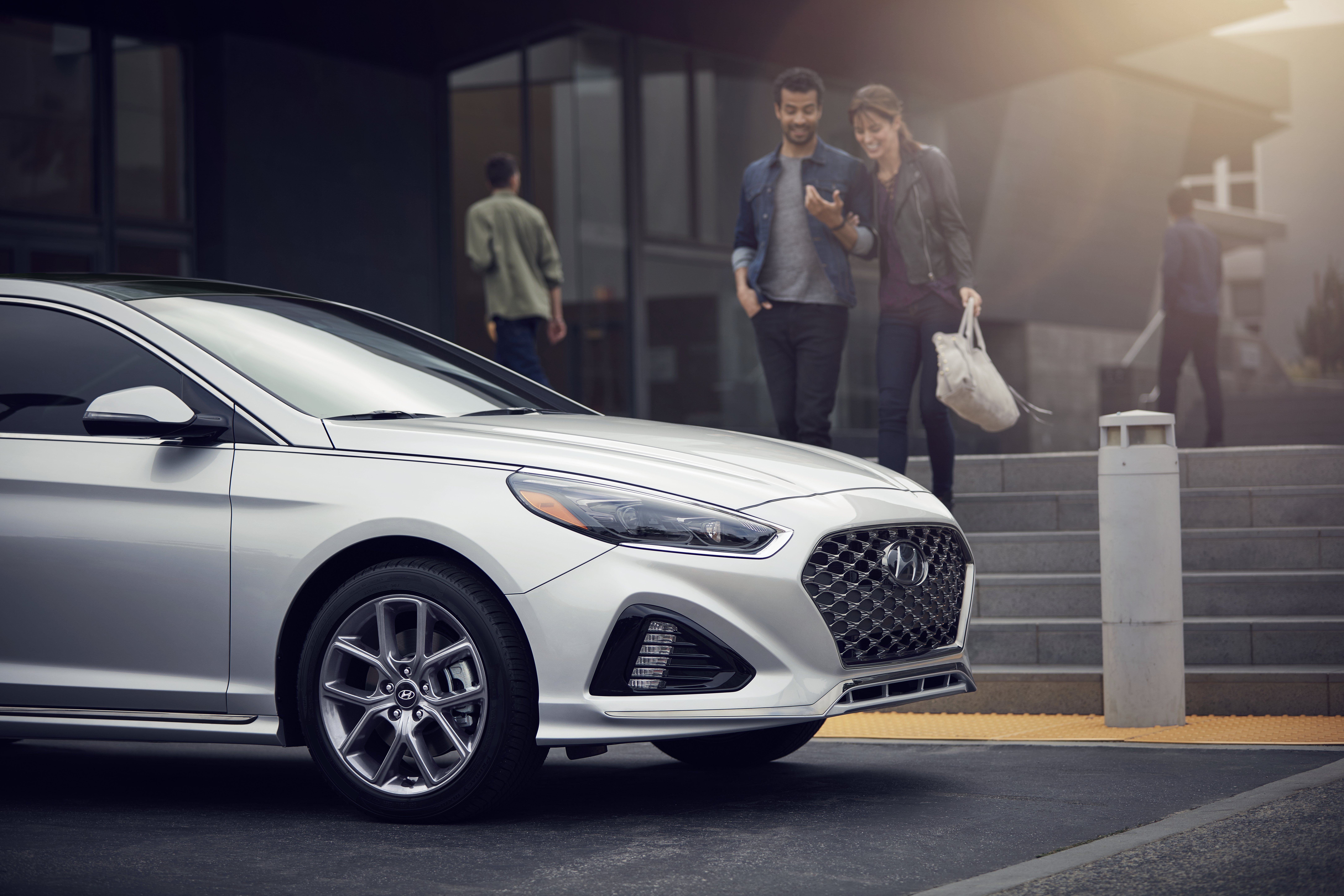Subscribing to Change: How Startup Fair’s Ascent is Shedding Light on a Larger Leasing Trend
Uber Technologies Inc.’s leasing unit Xchange Leasing was losing $9,000 per car, despite rates of $500 per month, and was accused of targeting protected immigrant communities in New York City with predatory lending practices following an investigation by Quartz. So why did startup used-car leasing app Fair finalize a deal to buy Xchange last month? How can the startup repair the reputation it’s inheriting?
“We do it with a name like Fair,” Chief Executive Scott Painter told Auto Finance News. “We have to start with the fact that we’re not in the consumer lending business at all. Unlike what Uber had done, which is to get into a leasing-type operation, we don’t lend our customers money to acquire or lease vehicles at all. These vehicles are owned by us and we focus on the ability to pay.”
In late September 2017, Uber officially began shuttering the program, which — while never intended to be a money-maker — was losing 18 times more money per vehicle than originally projected, according to The Wall Street Journal. Borrowers quickly fell behind on payments and often returned cars in poor condition with extensive miles driven.
While the price tag of the acquisition is unknown, the net book value of Xchange’s more than 30,000 vehicles was roughly $400 million, according to documents obtained by The WSJ.
“Our acquisition price accurately reflected the condition and depreciation of the vehicles, and we’ve very accurately been able to model depreciation on the use of ridesharing,” Painter said. “Anytime you use a vehicle in a commercial context, it’s going to depreciate harder, but the beautiful part about having all of that data is we’re able to [predict] that with hyper-accuracy today.”
The acquisition has launched Fair into the national spotlight, but it also provides the startup with more vehicles and an equity investment from Uber, which will start referring its drivers to Fair’s app. Fair will no longer garnish wages from Uber drivers, but it will offer a week-to-week rideshare payment option that is not currently available to other Fair consumers.
 So what makes the Fair founders think they can turn this program around? These rideshare drivers could be better served by a traditional lease, but they may not have the credit score to strike a deal. They also may want the short-term deals a lease provides because half of all Uber drivers quit after a year, according to the rideshare company’s own 2016 study. Fair claims it can offer its flexible terms at rates that start at $150 to $300 per month.
So what makes the Fair founders think they can turn this program around? These rideshare drivers could be better served by a traditional lease, but they may not have the credit score to strike a deal. They also may want the short-term deals a lease provides because half of all Uber drivers quit after a year, according to the rideshare company’s own 2016 study. Fair claims it can offer its flexible terms at rates that start at $150 to $300 per month.
“Basically, our business model is to charge the consumer for the depreciation value plus fees,” Painter said. “Our pricing is dramatically better than the alternatives.”
First, these are used-vehicle leases, so a certain amount of initial depreciation is built into the price. Second, Fair believes it can predict the value of the car so precisely that it only has to charge for the time used and the predicted insurance and maintenance costs, which also allows consumers to trade their car in at any time. Third, dealers and lenders have a “perverse incentive” to put consumers in a more expensive car than they can afford, and Fair is basing all of its decisioning on its affordability index rather than strictly on a credit score, Painter explained.
“We buy the car, and then we’re handling tax, title, and registration; we’re bundling everything and then giving it back to you as a simplified all-in single cost of ownership that’s less than you would otherwise pay for a rental or a lease,” Painter said. “Everything we do in the beginning of the app experience from a data collection point of view is getting to the bottom of that question — how much can you afford? And it turns out everyone can afford something.”
Of course, Fair is just one example of the mass amounts of experimentation happening within the leasing space.
Many captives launched a monthly subscription model for luxury vehicles last year, or is planning to do so in 2018; startups such as Musa Auto Finance are looking to make the underwriting process easier for dealerships; and technology providers such as Flexdrive are aiming to transform the role of dealerships into mobility hubs for consumers to swap out their leased vehicles.
It’s clear the traditional model of leasing is poised for some disruption, but which innovation will emerge supreme is still very much in question.
“When we get to full autonomy, 90% of the vehicles on the road will be leased or subscribed to,” Grayson Brulte, co-founder and president of the consulting firm Brulte & Co., told AFN. “There will be a hybrid mix where some vehicles will be shared and you will pay a lesser dollar amount, and others will be like a traditional lease and you have private control of the vehicle until the end of your lease.”
Captives Leading the Charge
The industry may still be years away from full adoption of autonomous vehicles, but there will likely be a lot of experimentation in the meantime.
The flood of OEM subscription programs started last year with Book By Cadillac. The service allows customers to have one of several models delivered to their home via a white-glove concierge for the luxury price of $1,800 per month with a $500 down payment. Members in New York, Dallas, and Los Angeles can swap out their car as many as 18 times a year.
From there, several others followed with similar parameters. Ford Motor Credit Co.’s Canvas offers a subscription service in the San Francisco Bay area, and the captive is also financing the OEM’s Lincoln Motor branded subscription service that’s set to launch this year. Bank of America via Volvo Financial Services is financing Care By Volvo, the German automaker’s foray into the subscription space, AFN has learned. Porsche Cars North America Inc. partnered with Clutch Technologies to debut Porsche Passport, which allows consumers to switch between the brand’s lineup of sports cars and SUVs. Finally, although a final announcement has not been made, Mercedes-Benz and BMW Group are the latest brands expected to join the segment.

“Right now, it’s focused on the luxury market,” Brulte said, adding that the price will eventually come down. “Volvo’s program is $600, so that’s getting down there. I think in the next 18 to 24 months you will see a sub-$500, I just don’t know which manufacturer would do it.”
When a service is able to offer a program around $300 per month, “that will be a game changer,” he said, because at that point it can be argued that with maintenance and insurance included consumers can save money compared to a loan or lease.
To get to that lower cost point, OEMs and captives are going to experiment with subscription models that prioritize different features.
For example, Book by Cadillac and Porsche Passport highlight the ability to swap out a sporty racer for a more practical SUV on a whim, but that’s one of the biggest reasons those programs cost thousands a month, Peter Wexler, Volvo Cars USA’s director of mobility, told AFN. By contrast, Volvo requires a two-year term with access to just one vehicle that can be swapped out after the first year, but that helps bring down the cost to just one-third of its competitors’ prices.
“We’re trying to resolve subscriptions a little bit differently than they are,” Wexler said. “We are focused more on the subscription being a third type of ownership model as compared to buying or leasing. It’s still an ownership model where the consumer owns the vehicle, but some of these other models — Porsche, Cadillac, etc. — they focus on a different model, where you get access to vehicles and it more closely resembles a rental.”
Care By Volvo is also building brand loyalty, he added. Nearly 90% of consumers who have already signed up for Volvo’s subscription — which begins shipping in April — have never interacted with the brand before.
Other brands will begin offering perks to build brand loyalty like credit card companies do today, Brulte said. Imagine, for example, travel points for a Cadillac subscription, or hospitality perks for being a Porsche Passport member.
However, Jose Puente, president of the dealership subscription technology provider Flexdrive, is more skeptical of OEM dedication to these programs. Their programs have grabbed a lot of press, but they remain “nascent concepts” to the manufacturers who are just experimenting in the space right now, he said. The OEMs have “no plan” to roll out car subscriptions to a larger commercial audience beyond niche luxury buyers, he added.
Flexdrive’s approach is to provide the software solution at the dealerships so that they can be the fleet owners making money off otherwise stagnant inventory. The platform is active at dealerships in Atlanta; Austin; Los Angeles; Philadelphia; Cherry Hill, N.J.; New York, N.Y., and has plans to roll out in San Francisco later this month. By yearend, Flexdrive plans to be in 23 markets.
“If you’re in automotive retail, some of these things are kind of off on the horizon and they’re sort of saying, ‘Well, maybe someday,’” Puente said. “But, the reality is technology is accelerating at a very fast rate, and what’s going to happen with dealers if they aren’t given the tools to participate? They will be relegated to being a service provider. … They will find themselves at the mercy of whoever the fleet owners [are].”
Banking on Mobility
Manufacturers and fintechs are going to drive innovation in this space, but banks don’t intend to be left out completely, said David Hollodick, senior vice president of product and pricing executive of consumer vehicle lending for Bank of America.
Since 2012, Bank of America has held Volvo Financial Service’s loan and lease book on its balance sheet, which now includes the newly launched Care By Volvo subscription program.
“I’ve not seen banks independently put together any programs around [mobility], and I think there are a lot of investigations going on in the marketplace as to how these things are going to work,” he told AFN. “Who are the right players to provide [this service]? Who has the best piece of the model? How can people leverage what they do best to make these models work? Surely there are models in place today, some include banks providing funding and some don’t.”

Given that these models of leasing no longer require consumers to take out a loan, it’s “clearly a threat” to traditional modes of consumer lending, he added. But that just means banks need to focus more on fleet financing.
“Banks can play on both sides of the fence, it just moves from one side of the business to the other,” he said. “So maybe banks’ balance sheets aren’t impacted, but how they lend the money changes over time.”
Like Hollodick, Brulte believes banks will play an integral role in the financing of these programs. After all, banks control 35% of the $1.1 trillion auto finance business, according to ExperianAutomotive, and they aren’t eager to give it up.
“I don’t believe the car companies will hold those vehicles on their balance sheet,” Brulte said. “They’ll give it to the bank, and then the bank collects 4% per month, per subscriber and their revenue will dramatically increase.”
The increase in revenue relies on autonomous cars taking over to where multiple people can share a car, and thus the bank increases the revenue stream with each new user on the platform. However, there could be fewer cars on the road and the payments consumers are expected to shoulder are likely to be lower than a traditional loan or lease.
“Banks will be highly successful to get in front of this, and to price based on the utilization of the vehicle,” he said. “Today, if you’re giving a car loan to one person, you’re giving an interest rate of X to one person. If you start putting five to 10 people in that one vehicle, you’re getting five to 10 times the revenue you would have gotten.”
Even once autonomy takes over the automotive space, there’s still room for subscription models that aren’t in a shared fleet, Brulte said.
“Not all vehicles will be shared, you will still lease an autonomous vehicle that is owned by you or your family, not necessarily shared,” he said. “There is a psychological trend where people still want to leave stuff in their car, and it’s a bigger issue than is really being discussed.”
Traditional Leasing Challenges
Subscription models are still subject to some of the same headwinds traditional leasing is facing.
Used-vehicle depreciation will continue to be an issue, as Black Book is expecting 3.7 million off-lease returns this year, compared with 3.3 million the year prior and 2.7 million in 2016. That’s bad news for new-car sales and captives looking to convince consumers that thousand-dollar subscription models are worth it, but it’s good timing for used-car lessees.
“Unless we have some sort of event that absorbs that supply, we will continue to see a buildup of used supply, and we will continue to see more customers looking at used vehicles,” Anil Goyal, Black Book’s executive vice president of operations, told AFN. “More consumers will be persuaded to purchase slightly used vehicles as those off-lease returns offer pretty good value for money.”
This year, Black Book predicts used-vehicle values will depreciate 16.5%, on average, this year, compared with 13.2% the year prior.
After years of lease penetration growth, the segment plateaued about 30% of total sales in 2017, according to Experian. Captives such as Ford Motor Credit are actively reducing their penetration to prepare for those off-lease returns, while other luxury brands push ahead as technology increases the price of vehicles coming off the assembly line.
However, a greater number of trucks and SUVs are starting to come off lease, which is good for used-car financiers looking for some extra cash, Ivan Drury, senior analyst at Edmunds, told AFN.
“What we’ll see in 2018, judging by what was leased three years prior, is a shift [away] from predominantly car stuff [that’s been] undesirable at dealerships,” he said. Now, compact SUVs and trucks are starting to come back off-lease, “and we need more of those,” Drury added.
All of these trends are pointing to more used sales and everyone, from used lessors such as Fair to captive subscription programs, believes that excess volume in the industry can help push this innovative niche.
“We’re going through a giant learning process,” Brulte said. “On a traditional three-year lease, [captives] know how the system works. But, if you’re on a one-month, two-month, three-month lease, or you’re constantly swapping out vehicles, you have to learn. You’ll see interesting pilots pop up in cities around the country and you’ll know it’s working when they announce, ‘We’ve added two more cities to the platform.’”

















